It's a Crossover article! Our very first. We're pairing together our Left Hand, Right Hand series with Unlocking Efficiency and Engagement. Who's kidding who, this was going to happen sooner or later.
The ability to integrate product development with the operations in distribution and sales is paramount. Cross-functional working can unlock efficiency and engagement that will create a step change in overall business performance -- part of our series "Unlocking Efficiency and Engagement," and "Left Hand, Right Hand" with practical strategies for manufacturers and distributors in embracing digital commerce with supply chain best practices.
Cross-Functional Collaboration is nothing new, yet its lack of polish, maturity, and innovation comes back to haunt businesses over and over. Whether manufacturing, product development, warehousing and distribution, or sales, there seems to be a tendency to allow silos with different goals to rear their heads despite the best of intentions. At the manufacturer's end, such an operation raises complications: poorly aligned goals, barriers to communication, and inefficiencies that diminish total performance. Cross-functional collaboration can engender the integrated approach to tackle these issues (KPMG, PwC).
So why is this? Why does Cross-Functional Collaboration start out with the best of intentions and stall out before elevating business performance to the level that it could? Despite constant technology's advances let's take a look at the place of Cross-Functional Collaboration and the heights that it can go when treated as an ever evolving digital partner in constant improvement and innovation.
Why does cross-functional collaboration matter so much?
Benefits of Collaboration start with Streamlined Processes. Coordinated efforts between the development of a product and its distribution ensure that the logistical considerations involved are all put into consideration; hence, there are no delays and costs. This in turns provides Enhanced Market Responsiveness. Sales teams can provide important market feedback to product development for an improved offering that relates to customer needs and preferences. In the end this results in overall Improved Efficiency. Businesses decrease redundancies and maximize resource allocation, thus saving money and getting products faster to the market.
So how does this come together? Start with the most cross-discipline cross-collaborative area of Interdependence. I'm a big fan of embracing the biggest, potentially most complex new concept for your culture to embrace how Interdependence is at the heart of Cross-Functional Collaboration.
Interdependence within an organization is both a powerful driver of efficiency and a potential source of friction. When departments and areas of responsibility intersect, the success of one often hinges on the performance of others but when brought into your team consciousness in earnest, it becomes a powerful source of team cohesiveness. This interconnectedness means that a lapse in one area—be it in manufacturing, supply chain, or sales—can have a ripple effect, causing delays, bottlenecks, or even operational failure across the organization; particularly important for a business culture, a place where each stakeholder, department and area leans into, and owns what they need to contribute and be accountable to the process. Similarly should a different piece of the process falter, how they can help bring about or support a solution for a fellow department or stakeholder.
The "C" word: developing your culture
The key challenge here is developing a culture of ownership and accountability; when multiple departments are involved, it's easy for responsibilities to become blurred. If stakeholders lack a deep understanding of how their roles impact others, or if they fail to communicate effectively, friction can develop. This is particularly true in manufacturing, supply chain, and end sales operations, where precise timing and quick recovery from failures are critical to market and customer expectations. Without a shared commitment to interdependence, these areas can become significant bottlenecks, stalling production and eroding customer trust. Embracing interdependence requires all stakeholders to understand not just their own responsibilities, but also how their work supports—and is supported by—others, to have each other's backs as it were. Without this collective mindset, accountability can falter, fingers get pointed, leading to inefficiencies and frustrations that undermine the entire operation.
There's that word again: culture. Culture encompasses the attitude, dialogue, vibe if you will, of daily operational interaction as much as it does the thinking and willingness to reevaluate how models are developed in the first place. Cross-functional teams that include members from product development, distribution, and sales coming together with shared vision across departmental lines make your teams each a part of a greater whole. Create your cross-functional teams at the outset to design the very operational models you will be using from the ground up - it's essential for creating policies and systems that are both robust and adaptable. These teams should consist of members from diverse departments—such as product development, supply chain, sales, and IT—who bring their unique perspectives and expertise to the table. You're now building a culture of ownership within your teams, this ownership will go a long way to executing on what you what to achieve.
Additionally, by involving these stakeholders in the initial design phase, the resulting operational models are more likely to reflect the real-world needs and challenges of the entire organization. This collaborative approach ensures that the models are not only executable but also optimized for efficiency, scalability, and resilience from the outset not just for your team - but by your team.
Now that we've established why cross-functional collaboration needs love and care, let's look at how to approach this.
Build Scenarios and Case Studies: have your stakeholders implement cross-functional working scenarios. This is how they see their real-world workflows play out day in day out. High level examples of team collaboration scenarios can include:
1. Product Development to Marketing
- Output (Product Development): Completion of a new product prototype with finalized features and specifications.
- Input (Marketing): The finalized product details become the input for the marketing team to create promotional materials, plan the product launch, and develop targeted campaigns. Marketing strategies are built based on the unique selling points and features provided by product development.
2. Manufacturing to Inventory Management
- Output (Manufacturing): Finished goods are produced and ready for distribution.
- Input (Inventory Management): Newly produced inventory is - automatically, right? - logged into the inventory management system, which triggers automated updates across sales channels, adjusts stock levels, and informs supply chain platforms/decisions like reordering raw materials.
3. Sales to Customer Support
- Output (Sales): A new sale is completed, customer purchase details, including product, delivery schedule, and payment information, are finalized.
- Input (Customer Support): sales transaction details feed into the customer support system, enabling support teams to provide personalized service, manage post-sale communications, and address any customer inquiries related to the order.
4. Supply Chain Management to Production/Manufacturing Planning
- Output (Supply Chain Management): Arrival of raw materials or components needed for manufacturing.
- Input (Production Planning): The receipt of materials triggers production planning, where the availability of these inputs allows the production team to schedule manufacturing runs, allocate resources, and ensure timely production.
5. Finance to Strategic Planning
- Output (Finance): Quarterly financial reports detailing revenue, expenses, and profit margins.
- Input (Strategic Planning): The financial data serves as input for the strategic planning team to evaluate current performance, forecast future growth, and make informed decisions about budget allocations, investments, and business strategy adjustments.
6. Customer Feedback to Product Development
- Output (Customer Feedback): Collection of customer feedback and reviews on existing products.
- Input (Product Development): Insights from customer feedback are analyzed and used by the product development team to iterate on current products, prioritize features for future development, and make improvements that better meet customer needs.
Future Perspective: The role of cross-functional collaboration is set to be further enhanced as technologies become pervasive and business requirements transform in manufacturing and distribution functions. AI, IoT, and blockchain will further enable and enhance collaboration among users, with new opportunities for innovation and efficiency.
Businesses can achieve tremendous improvement in their operational efficiencies through the tearing down of silos and building a culture of togetherness and cooperation
Leveraging work from one area or team to support or impact another area—especially through automated processes—can indeed multiply productivity across an organization. This concept is central to achieving economies of scale and operational efficiency, particularly in environments where coordination between departments is crucial.
So why write this article? If these are entrenched principles, shouldn't this be old hat for growing businesses? Yes. Yes it should. But it isn't. Our experience is that time and again, businesses start cross-functional collaboration in one area - possibly because one or two teams identified their particular scenario and were innovative enough on their own - and then it stopped there. That's not a culture, however, and it's far from complete, additionally I would argue that this job is never complete. It needs regularly feed, care, love and watering because that is where you transcend from "system-level What" thinking, to "culture-level Why" DNA. Let’s dive into how this kind of leverage can create exponential benefits.
Real-Time Information Flow and Response:
- When manufacturing output is instantly made available to other departments (like sales and marketing), it eliminates delays and ensures that every part of the organization operates with the latest data. For example, if a product becomes available, this information can trigger several automated processes:
- Inventory Management: The system updates inventory levels across all sales channels instantly.
- Sales and Marketing Activation: The sales team is automatically notified, CRM systems trigger personalized communications to potential buyers (such as those on wait lists or wish lists), and marketing campaigns can be automatically adjusted or initiated based on the new stock levels.
- Supply Chain Optimization: Automated systems could alert suppliers or reorder materials based on the new inventory levels, ensuring that the production line remains efficient.
Integrated Systems' Exponential Gains:
- When systems are integrated (e.g., ERP, CRM, and inventory management), the output of one department (like manufacturing) can have a cascading effect on others:
- Efficiency Gains: A single action, such as updating inventory, can trigger multiple productive outcomes across the organization without requiring additional human input. This automation reduces manual workload, minimizes errors, and ensures that each department is operating at peak efficiency.
- Scalability: As the volume of output increases, the same processes can handle larger scales without requiring proportional increases in resources or effort. This is where the exponential productivity comes in—doing more with less as the organization grows.
Proactive Sales and Customer Engagement:
- If newly available inventory automatically triggers CRM-integrated processes, such as notifying sales teams and engaging customers on wait lists, the company can convert potential sales more quickly. This not only enhances customer satisfaction but also boosts sales velocity:
- Increased Sales Efficiency: The sales team is working with the most up-to-date information and can prioritize high-value leads or customers who are most likely to convert.
- Enhanced Customer Experience: Customers receive timely notifications about product availability, increasing their likelihood of making a purchase and building brand loyalty.
Data-Driven Decision Making:
- Automated processes generate a wealth of data that can be used for real-time decision-making and strategic planning. For example:
- Demand Forecasting: The data from sales and inventory can feed into AI-driven demand forecasting models, helping the company better anticipate future needs and optimize production schedules.
- Marketing Optimization: Real-time inventory data can allow marketing teams to dynamically adjust their strategies, such as promoting items that are newly available or adjusting pricing based on stock levels.
Building shared (collaborative) goals provides next-level leverage in scaling productivity across different areas of an organization through automation and integrated systems. By ensuring that the output of one department (like manufacturing or warehousing) automatically triggers beneficial actions in others (like sales and marketing), businesses can achieve faster time-to-market, higher sales conversion rates, and more efficient use of resources. This not only enhances overall business performance but also positions the organization to scale effectively as you build demand and production volumes.


























